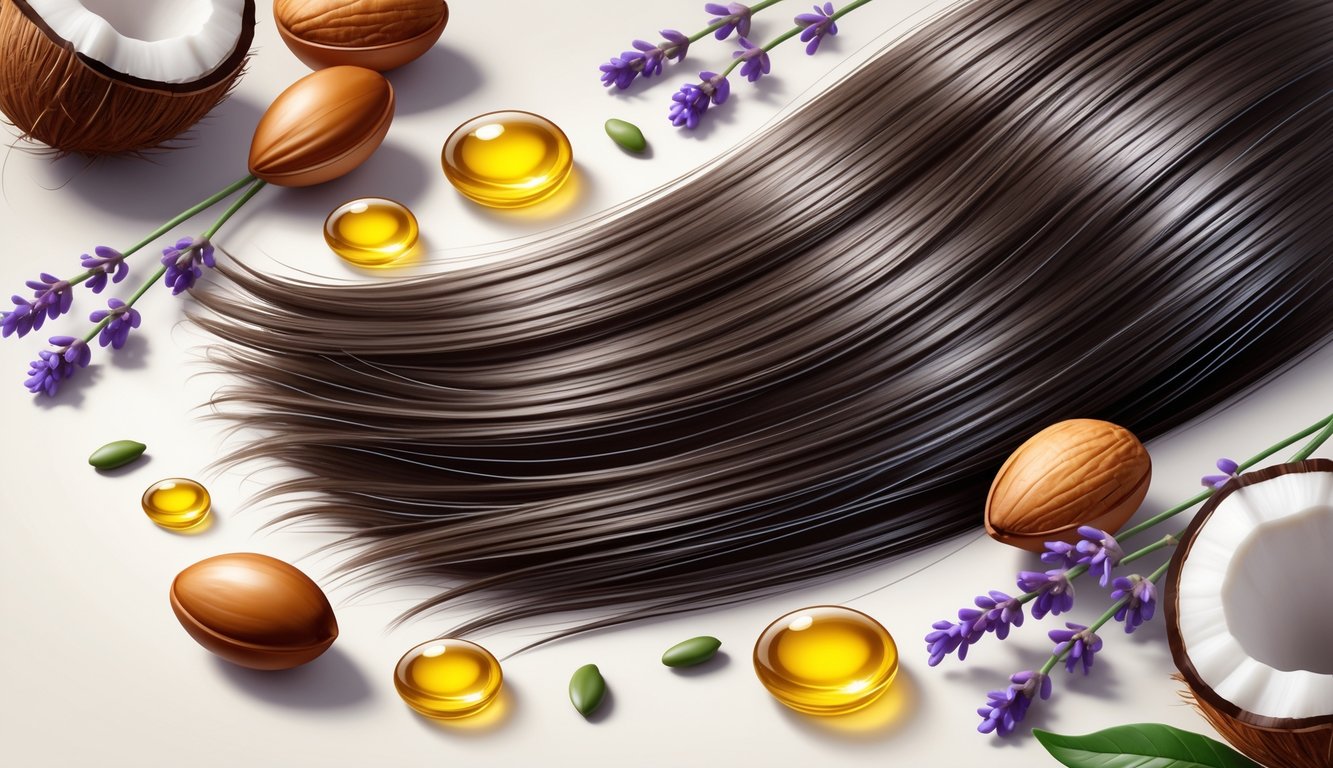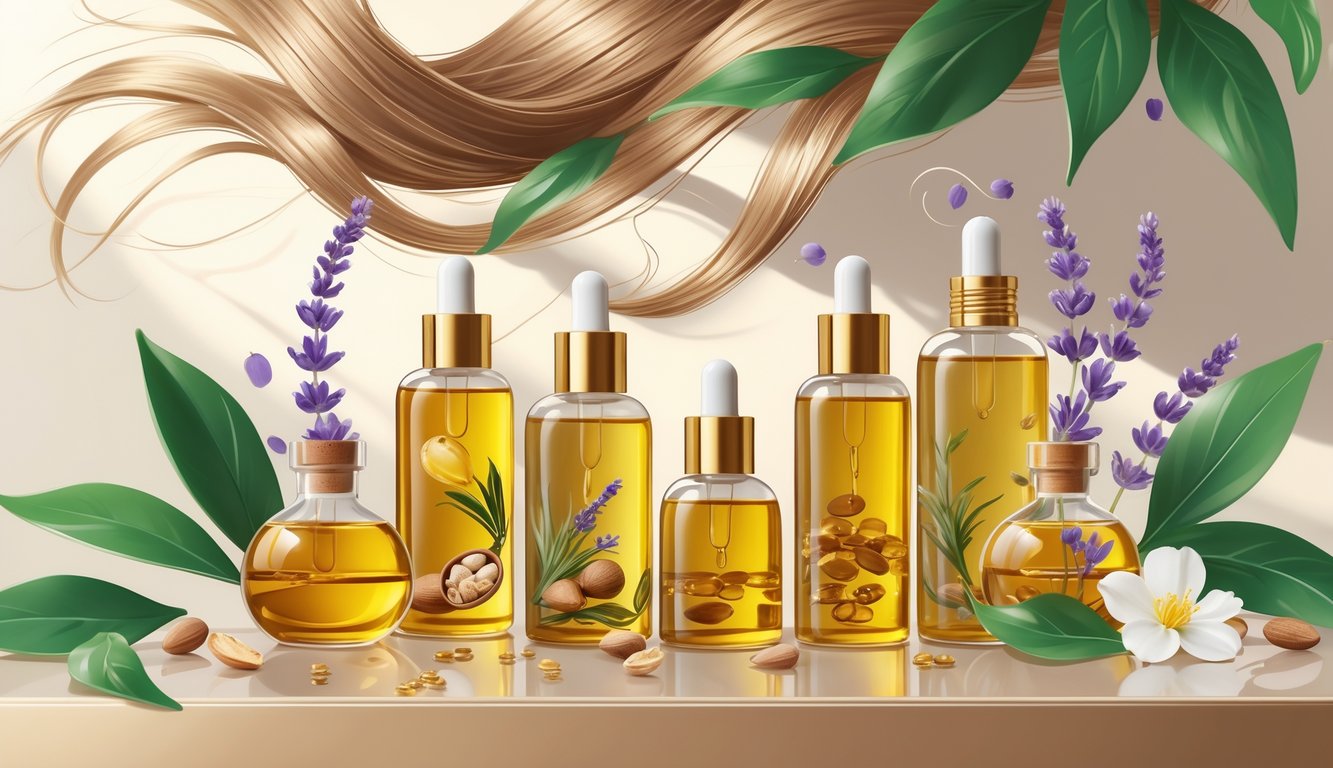Hair Repair Oils Finally Beating Split Ends Without Salon Markups
Powerful Ingredients: Beyond The Basics

Honestly, after ditching those “miracle” salon serums, I started noticing the real MVPs are oils and stuff you never see in ads. The difference between what’s hyped (silicone drops, overpriced nonsense) and what actually helps fried hair? Huge.
Castor Oil And Ricinoleic Acid For Growth
Cracked open some sticky castor oil (everyone’s grandma has a bottle), expecting disaster. Surprise: ricinoleic acid in castor oil does more than just glue split ends together. Medical journals talk about it speeding up scalp circulation—so roots get more nutrients, breakage drops, and after a couple weeks, new growth feels thicker. Professionals love it for being a humectant, pulling in moisture, plus omega-9s seal up the splits. Downside? The smell lingers. If you want real repair, stick with it—quick fixes don’t compare.
Olive Oil’s Role In Repair And Moisture
I raided my pantry for olive oil—why pay for fancy bottles? Oleic acid’s the hero here; it actually sinks into the hair cuticle. I tried a week-long “hot oil mask” and ruined a towel, but my split ends looked better after three rounds. Research always lists extra virgin olive oil’s fatty acids as the thing that keeps hair from drying out—especially if you blast space heaters nonstop (been there). But if you expect zero grease, you’ll be disappointed. Even my stylist admitted, “It’s old-school, but it works.” Olive oil’s always on the best-of lists, for a reason.
Grapeseed Oil For Lightweight Hydration
Why is grapeseed oil such a secret? It’s my go-to when I can’t risk greasy hair. Almost weightless, soaks right in. Loaded with linoleic acid (omega-6), it fixes dry ends without the sticky mess. Some people think only coconut oil “locks in” moisture, but grapeseed spreads out so evenly, I can use it every other day and never look oily. Weird hack: mix a drop into leave-in. Even on humid days, it works. Stylists and nutritionists agree—split ends chill out after a month, which you’ll see in every legit oil guide. If I overdo it, sure, my scalp goes slippery, but at least my ends don’t look like a broom.
Specialized Oils And Trending Finds

Every new bottle swears it’ll fix everything, but most just make my hair greasy or do nothing. A few actually do something—especially the ones with weird names or “molecular repair” claims. Tree nut oils nobody talked about a decade ago? Suddenly everywhere.
Ama Oil And Baobab Seed Oil Explained
So I’m combing out chlorine hair, wondering why everything smells like dessert or glue. Ama oil comes up a lot—stylists rave about it for softening rough ends, fast. Not a drugstore staple, but salons sneak it into pro mixes for smoothness without the heavy, slippery feel. Baobab seed oil? Trichologists swear by it for high-porosity curls—tons of vitamins (A, D, E, F), and there’s apparently a 2023 study showing stronger ends under a microscope. Not a miracle, but if your hair snaps at your collarbone, baobab helps. Just takes patience.
Random side note: I once mixed up baobab and grapeseed. Totally different. Baobab did nothing on dry hair—timing matters. Don’t trust shortcuts, you’ll just waste your money.
Spotlight On K18 Molecular Repair Hair Oil
K18 Molecular Repair Hair Oil. The price is insane, but it’s everywhere in magazines. I caved after watching a stylist use it pre-blowout—supposedly the peptides re-link keratin chains (the stuff holding your split ends together). There’s actual science here, not just “miracle butter” marketing. You work it into the last couple inches, wait, then style. No residue, which is rare for my fine hair.
Nothing else I’ve tried passes the bond repair strip tests from real salons. But, warning: if you use it like conditioner, it’s a disaster—my cousin did, and her hair was stringy for months. Light hand, always. Pro reviewers sometimes say it beats liquid keratin oils, and honestly, I don’t disagree.
Innovative Options: Ouai, Oribe, OGX
Alright, so I blasted through this best hair oils review in a haze and, shocker, it’s all about “shine” and “gloss” until you get to the part on split end repair—then suddenly, only three brands matter? Ouai Hair Oil—yep, the one everyone grabs before frying their hair with a curling wand—claims it shields up to 450°F and tames frizz without that greasy after-feel (which, if you’ve ever dealt with coconut oil, is basically a miracle).
Oribe’s Split End Seal? Supposedly, it uses polymers to glue your ends back together. I only know this because a gym stylist raved about it, swearing she could skip trims for months. I don’t know. OGX’s Argan Oil of Morocco—honestly, I just grabbed it in an airport once because it’s cheap and everywhere. The argan oil left my ends feeling heavier (not sticky, though), and you can replace it in literally any drugstore if you lose it mid-trip.
Don’t even ask me to rank these. It’s like picking a favorite child you barely like. If your hair’s fried and the Kérastase Nutri-Supplement Split Ends Serum is way out of budget, OGX or Ouai work, and Oribe is for people who don’t check prices. Every brand screams “repair,” but only some actually patch up splits enough to maybe skip a cut. Maybe. I’d rather trust my own brush than any influencer’s “after” shot, but whatever, that’s a different rant.



